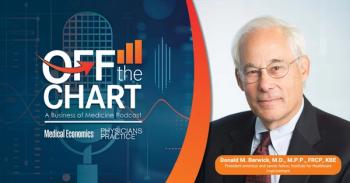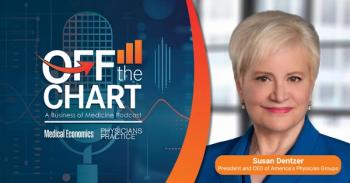
HMO Redux: This Time, Technology Puts Physicians in Charge
Just adding software without retooling your practice and joining an integrated care network isn’t the best approach.
Two decades ago, health maintenance organizations, which were originally pre-paid group practice models developed by progressive-thinking large employers and healthcare engineers, were adopted by traditional health insurers.
They came to be viewed as penny-pinching bureaucracies that placed profits ahead of patients. While their role in reducing waste in the system benefited everyone, their operating model created stress in the physician/patient relationship and created barriers to care through complex processes designed to reduce unnecessary utilization. Unfortunately the same systems that discouraged unnecessary utilization, also sealed their downfall. Patients grew to resent the imposed restrictions and physicians grew angry at having decisions questioned by others who did not know their patients personally.
So what was the difference from the early group-model HMOs, which consistently scored high in quality and had loyal patient followings, versus what HMO medicine and managed care grew to represent? The early HMOs were narrow-network, geographically localized, provider-led integrated delivery systems led by physicians who managed their patients’ care. The latter were large-scale institutionalized systems that managed physician decision making.
Today, there are developing integrated models called accountable delivery systems. And this time, they have potent new tools that physicians can control - comprehensive, integrated software and powerful, multi-channel hardware. In 1995, when a room full of computers couldn’t run a smartphone, providers were grouped into large clinic–like buildings, where they shared common paper records. Now, physicians anywhere can be clinically integrated, sharing common data using cloud-computing services that can identify and alert to gaps in care, stratify population risk, and deliver this information automatically to the physician or care coordinator. Collectively these new systems promise to improve the population health status, reduce the downstream costs of providing care, and improve the patient experience - all while cutting healthcare expenditures by as much as 25 percent by eliminating waste and duplication.
The new systems are not EHR or EMR systems, which only accumulate data. They are systems that take the data and turn it into actionable information to enable physicians to manage patient care more effectively, cut waste by efficiently coordinating care and improve outcomes by keeping everyone on the same clinical page.
But, just adding powerful software without retooling your practice operations and joining an integrated-care network will cost you your independence instead of preserving it.
As they say in the movies - this time, it’s for keeps. The opportunity and tools are there to control your own destiny as the payment system commutes from fee for service to pay for value.
If you think that there is plenty of time, or that all of these changes will go away, consider this:
• The primary implementation of the ACA is less than a year away.
• The ACA is law, and has been ruled so by the U.S. Supreme Court.
• The votes are not in Congress to change things.
• President Obama has four more years, and has firmly and repeatedly stated he will not consider changes.
• HHS, CMS, and the IRS are gearing up and moving things forward with the full unstoppable force of the U.S. government.
• Laws of this broad scope do not go away once implemented. Ever.
• There are tens of billions in lost profits to be recovered and big incentives at stake, which is why hospitals and insurers are aggressively buying up primary-care practices. They are doing what you, too can do by aggregating with other independent physicians now.
A lot of smart people are investing heavily to provide services that aim to help physicians not only survive, but thrive. PCMH and ACO software is the hot, new growth sector in healthcare. Investment has exploded, and companies are popping up everywhere.
But, it will be the consultants and advisors, particularly those with their own systems, who will win the day for physicians because software is only the platform. Practice operations is the engine.
Dr. Bonvicino is a former Regional Medical Director at the Garden State Medical Group and former senior medical director of Horizon Healthcare Innovations and Blue Cross/Blue Shield of New Jersey.
Newsletter
Optimize your practice with the Physicians Practice newsletter, offering management pearls, leadership tips, and business strategies tailored for practice administrators and physicians of any specialty.








